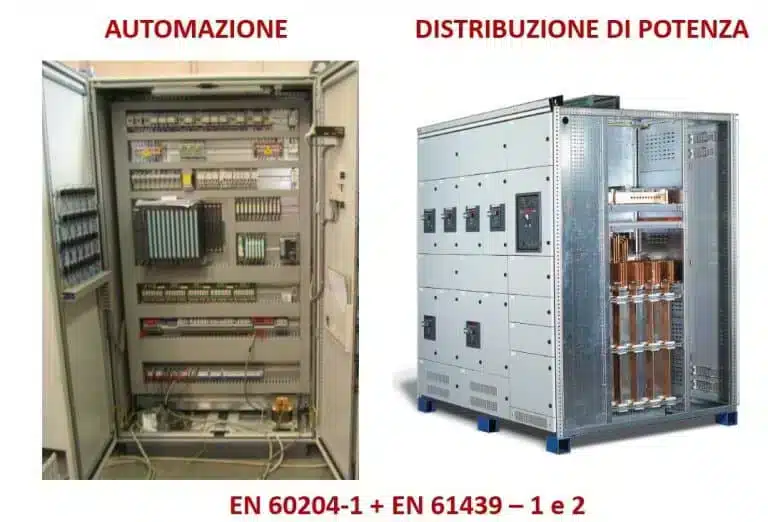Last edit: 03/08/2023

The verifications and tests required by EN 60204-1 or EN 61439-1, are mandatory for CE marking of electrical panels and electrical equipment of machines.
Both Standards are harmonized with the Low Voltage Directive.
EN 60204-1: Safety of machinery – Electrical equipment of machines – Part 1: General requirements
EN 61439-1: Low-voltage switchgear and controlgear assemblies – Part 1: General rules
EN 60204-1 is the specific standard for switchboards. It is “concerned” with the protection of persons from Direct and Indirect contacts as well as with the implementation of a safe control system. The two mandatory measures for the purpose of CE Marking are:
- Verification of the continuity of the protective bonding circuit.
- Fault loop impedance verification and suitability of the associated overcurrent protective device.
These tests are performed on utilities in the field.
EN 61439-1 is the mother standard for all switchboards and compared to EN 60204-1, which is more focused on “Automation switchboards,” it is more oriented on “Distribution switchboards.” The tests in this case focus on the robustness of the switchboard, and may concern impulse voltage withstand, short-circuit withstand, or even electromagnetic compatibility. In this case, for the purpose of CE Marking, the practical tests that are performed on the switchboard are:
- Continuity test
- Measurement of insulation resistance
- Dielectric strength test
The tests are mainly distinguished into:
1. Design Verifications: these are required by EN 61439-1
2. Individual verifications: these are required by both EN 61439-1 and EN 60204-1
Design verifications, relate to the switchboard as a “design,” once the tests have been carried out and the requirements have been met for a specimen switchboard built according to that particular design, all switchboards built in accordance with the requirements of the design will automatically have met the requirements of the tests. This condition is generally valid for distribution boards but not for automation boards, which, because they are usually produced as a single specimen, must unfortunately always be subject to the Design Verifications as well.
In addition, for automation switchboards, individual verifications must also be made, i.e., verifications to be carried out on each switchboard specimen.